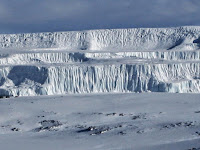 Locals refer to the Kitulo Plateau as Bustani ya Mungu
- The Garden of God – while botanists have dubbed it the Serengeti of Flowers,
host to ‘one of the great floral spectacles of the world’. And Kitulo is indeed
a rare botanical marvel, home to a full 350 species of vascular plants,
including 45 varieties of terrestrial orchid, which erupt into a riotous
wildflower display of breathtaking scale and diversity during the main rainy
season of late November to April.
Locals refer to the Kitulo Plateau as Bustani ya Mungu
- The Garden of God – while botanists have dubbed it the Serengeti of Flowers,
host to ‘one of the great floral spectacles of the world’. And Kitulo is indeed
a rare botanical marvel, home to a full 350 species of vascular plants,
including 45 varieties of terrestrial orchid, which erupt into a riotous
wildflower display of breathtaking scale and diversity during the main rainy
season of late November to April.
Perched at around 2,600 metres (8,500 ft) between the
rugged peaks of the Kipengere, Poroto and Livingstone Mountains, the
well-watered volcanic soils of Kitulo support the largest and most important
montane grassland community in Tanzania.
One of the most important watersheds for the Great
Ruaha River, Kitulo is well known for its floral significance – not only a
multitude of orchids, but also the stunning yellow-orange red-hot poker and a
variety of aloes, proteas, geraniums, giant lobelias, lilies and aster daisies,
of which more than 30 species are endemic to southern Tanzania.
 Big game is sparsely represented, though a few hardy mountain reedbuck and
eland still roam the open grassland.
Big game is sparsely represented, though a few hardy mountain reedbuck and
eland still roam the open grassland. 












